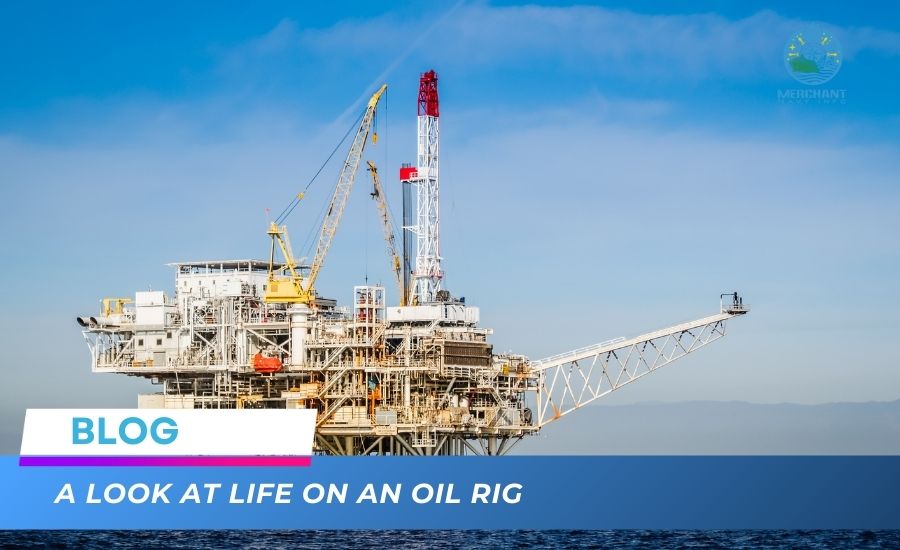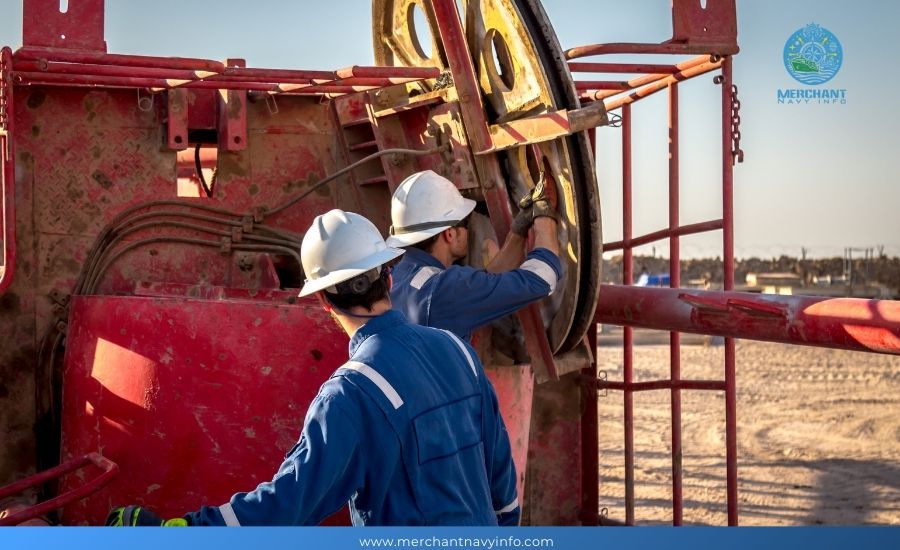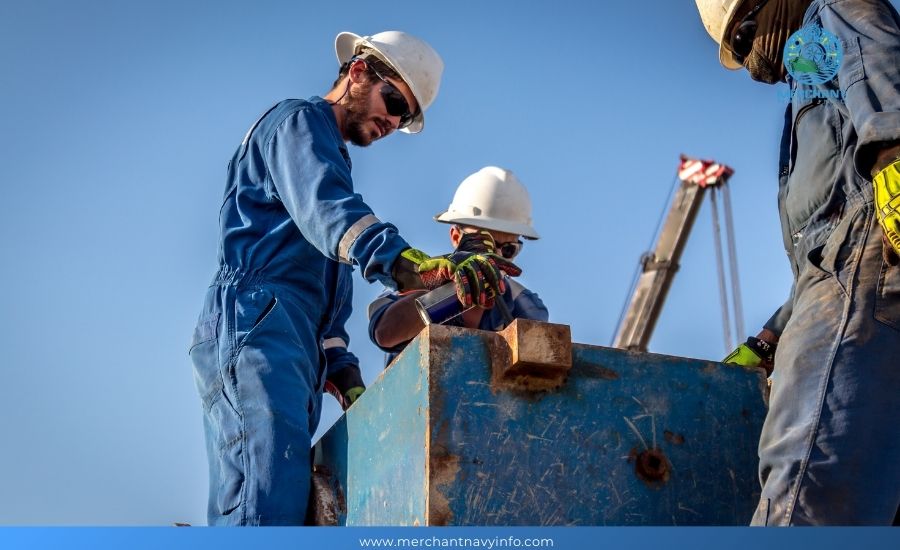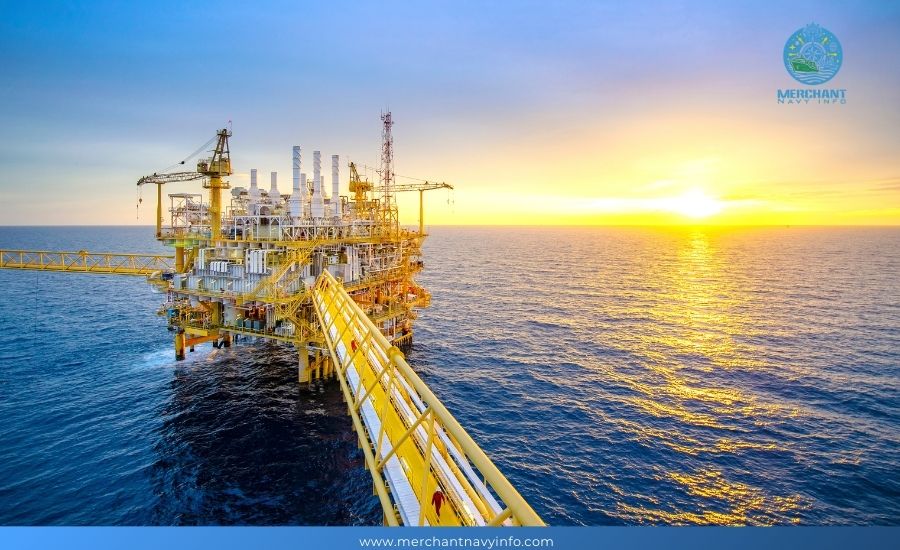
A Look At Life On An Oil Rig
Living and working on an island and enjoying a two-week vacation every month sounds like a dream. For offshore workers, this is their life, and while it has its benefits, it is certainly not always a “dream.” While the schedule may seem relaxed, it is carefully designed to provide a comprehensive balance of long, hard hours and small spaces.
Offshore oil rigs are cities in themselves, and they have a strange way of bringing co-workers together, becoming a second family and support group for life on the water. Let’s take a closer look at life on an offshore oil rig.
Accommodation on an oil rig looks like a combination of an industrial complex and a busy hotel. Many platforms have small accommodations that are a mix of bedrooms and closets, usually consisting of a pair of bunk beds, a desk, and closet space. Day after day, the offshore workers eat their meals together. Although the workers work 12 to 14 hours a day, they still have time for activities. Many offshore workers have access to onboard gyms, movies, laundry, and other recreational activities. Ping pong is popular.
Fortunately, although each employee can have a roommate, people are allowed some privacy. Some platforms ensure that roommates have different shifts, allowing them to be alone in the room for a few hours.
What are platform managers looking for?
Due to the intensity of the work, long hours and small spaces, the need for interpersonal skills is much greater than in a regular office job.
Todd Hook, a Shell control room operator, said the most important thing for drillers is not technical ability, but the ability to get along with others. “We are looking for communication skills, and we do an exercise called “Lost on the Moon”, where we ask a small group of people to think about what tools they would need if they were on one side of the moon and wanted to get to the other side. “We want to see who’s on the other side,” he said.
In organizational psychology, the “culture” of a workplace determines how well people perform in that place. In the office, “culture” gets a lot of lip service, but on an oil rig, how well a person fits into the culture is even more important. After all, the workers are all stuck on the same small island hundreds of miles from shore.
Pros and Cons of the Offshore Drilling Industry
Life on an offshore oil rig isn’t for everyone. The long hours, hard work, and rigorous schedules quickly weed out workers, leaving only the most motivated and disciplined. In addition, this type of work is far more dangerous than any other industry, with the potential for offshore injuries and disasters. The schedules and risks can be difficult for those with families and young children at home.

But despite the challenges, oil rigs are still packed with hard-working people. Offshore oil rigs are home to struggling people who are partially responsible for billion-dollar operations. Not everyone has access to the rig. Those who stick around find that they can make a good living and avoid the endless 9-to-5 grind. The camaraderie of coworkers alleviates the loneliness of working on an offshore oil rig, and the ample free time allows workers to devote themselves to other interests. Best of all, workers can live a comfortable lifestyle and provide for their families with a job that generally doesn’t require a college degree.
When Offshore Rigs Get Dangerous
While offshore drilling can offer plenty of money-making opportunities, it can also be high-risk. The drilling industry has seven times more fatalities than any other industry in the U.S. And given the nature of the work, these injuries aren’t random, either.
When things go wrong, it’s critical to have a dedicated legal team to protect you. At Arnold & Itkin, our third-party injury attorneys are dedicated to protecting the rights of injured people. Whether an accident or your employer’s negligence caused your injury, our team can seek compensation on your behalf. Our clients, including more than
A Typical Day for a Crew Member on an Oil Rig
The work shifts on an oil rig depend on your arrival time and the business situation. After that, you will be assigned a 12-hour shift and a 12-hour break.
The exact hours may vary depending on the job you are good at. Since you are on the platform for a full two weeks with limited sources of entertainment, the company usually makes you work longer hours with adequate breaks in between. Therefore, staying awake for about 16 hours may be possible and then sleeping for the remaining 8 hours.
While this may strike many as inhumane working hours, remember that not sleeping on an oil rig is considered “working.”
Therefore, meals and dedicated relaxation time are included in this period, aiming to improve the well-being of the employees. A detailed work list is prepared for each crew member on board and strictly followed to ensure that no time is wasted.
Since your “day” may start at midnight, the oil rig follows a 24-hour operating system. Here is a typical day for a worker starting a night shift in this system:
- 23:30 hours the day before Waking up and arranging equipment for the shift.
- 00:00 hours: Main meal 1. Sign in to the shift and receive instructions for the “day”.
- 02:00 hours: Take 1 break, as the job requires regular breaks to recover.
- 04:00 hours: Take 2 breaks.
- 06:00 hours: Main meal 2.
- 08:00 hours: Personal time.
- 10:00 hours: Take 3 breaks.
- 12:00 hours: Take 4 breaks.
- 14:00 hours: Main meal 3.
- 15:30 hours: End of the day. Last break of the shift.
- 16:00: Get ready for the next day, eat a snack, and go to bed.
Although it seems long, the day is filled with breaks designed to give the workers a break. During work hours, they can talk to their families on the beach, chat with coworkers, or prepare snacks from the perpetually filled pantry.
Oil Platform Life Training Courses and Education
Working on an oil rig is not easy for the average person. The machines used in the field are unique, the types of work are different, and the physical intensity can be difficult. That is why most oil and gas companies have a long list of employee qualifications and requirements.
After obtaining a diploma or specific training courses, those with minimal education can apply for entry-level oil rig jobs. They can become housekeepers, kitchen workers, floor workers, and welders.
Engineers need to obtain a degree or certification to design sturdy marine structures, paying special attention to stability and other factors.

Workers in machinery repair, hardware installation, welding, etc. must obtain certificates to operate heavy equipment and specialized machinery.
For example, marine and offshore welders have comprehensive courses and certifications required to work in the industry.
Finally, operations and logistics professionals must consider many variables in their calculations – weather conditions, work hour requirements, safety guidelines, physical working conditions, and more.
While companies often train their employees in these skills, they also seek motivated individuals with certifications. This helps them stand out from the crowd and provides them with experience in the field.
Communication with the mainland
For any maritime business, communication with the mainland is always important. Light helicopters are one of the most widely used aircraft in the world and are the closest source of supplies, equipment, and assistance in emergencies. That is why all companies in this industry pay special attention to how they plan the logistics behind ground transportation.
A specially modified vertical take-off and landing helicopter is the most common method of transporting crews, personnel, and equipment. Popular helicopter manufacturers include Airbus and Bristow Group. These aircraft are classified and have different uses.
Light helicopters can only transport a limited number of passengers, less than ten, including the pilot. They are used to transport small groups from shore or inspect offshore pipelines with a small crew. They can carry basic supplies but cannot carry payloads.
There are two main types of medium helicopters. Commuter types can carry larger groups of passengers and are typically used for shift operations of 15 people.
Cargo types can handle larger loads and even medium-sized suspended loads.
Heavy-lift helicopters can transport large equipment, suspended payloads, and passengers up to 20 people. They are used for more powerful and heavy operations.
VTOL stands for vertical takeoff and landing, which means the aircraft can rise or descend vertically without any eccentric movement. This is ideal for tight maneuvers where space is limited, and the tail of the helicopter is also less likely to hit any equipment.

These helicopters operate in the following steps to transport cargo and passengers to offshore locations:
The helicopter approaches the airport downwind of the flare stack. This is to prevent harmful fumes from overwhelming the engine and passenger systems.
If suspended loads are under the hull, they are gently lowered to the deck and detached. Next, the ground crew removes the cargo. The breakaway device is an important component, as it is used to remove the helicopter’s excess cargo load in an emergency.
Finally, after the weather clears, the helicopter lands on the airfield. The ground crew uses a navigation system, hand gestures, and lights to land safely.
In addition to aircraft, ships are another way to connect offshore platforms with land. This is less desirable because approaching large offshore platforms can be a safety issue.
However, smaller platforms also have a fleet of dedicated motorized boats that can be used to move cargo quickly, conduct inspections, or retrieve equipment from the sea.
Although elevators are common in modern times, transport vessel crew members need to climb these platforms’ floating booms to reach the main deck.
Salaries and Benefits for Oil Rig Employees
Although the lifestyle of an oil rig crew is demanding, it is a satisfying opportunity to be at the forefront of an ever-evolving and complex industry. Rest assured that only a few people are qualified to do the job of these experts. In addition to high salaries, workers on oil rigs have many benefits.
Considering that they are dealing with modern equipment that requires previous experience, their salaries are unbeatable. There is also the opportunity to work in different locations in different regions and continents. For those who love the sea, this is a great opportunity to see the beauty of the sea firsthand.
World’s Top Oil Rig Dive Sites
10 Largest Oil Field in the Gulf of Mexico
Breaking Barriers in the Oil Tanker Industry
Since each shift usually lasts 2-3 weeks, they will be given the same time after the shift is over. This means you can spend time with your family after the service.
Although you may be asked to come to the office occasionally for briefings or team meetings, this time is your time to relax.
When these workers leave their families for remote platforms, the parent company usually provides housing, a spouse’s job, or other family benefits. In addition, the family has full insurance.
Finally, for the adventurer, this career will fulfill his dreams, allowing him to work in a dynamic field that is demanding but also rewards his hard work and commitment.
What happens to an oil rig at the end of its service life?
When an oil platform stops producing, the company can shut down the well and remove the platform or only remove its upper part, turning it into an artificial reef. After years of operation, the platform’s pillars under the waves and mud have merged with the marine ecosystem in many ways.
This practice of transforming scrapped rigs into coral reefs began in the United States 40 years ago, after 1984. That year, the U.S. Congress passed the National Fisheries Enhancement Act, highlighting the advantages of converting rigs into reefs. Alabama, Louisiana, Mississippi, and Texas have implemented rig-to-reef conversion programs, which have converted more than 500 rigs into artificial reefs.

Underground rigs are ideal for corals, mussels, small fish, and marine wildlife. Rigs like Platform Holly are among the most thriving artificial marine habitats, hosting a variety of fish. However, these reefs are also at risk because oil from the original wells or pipelines still leaks. In 2021, a pipeline between the Elly platform and the Port of Long Beach, California, leaked, affecting marine animals living near the artificial reefs.
However, if California’s artificial reefs collapse, about 27 marine ecosystems will be affected. This also causes pollution and waste because some platforms, such as the Harmony platform on the Santa Barbara Canal, are taller than the Eiffel Tower!
Interestingly, many oil platforms near the Gulf of Mexico have become prolific fish habitats and hotspots for diving, snorkeling, and recreational fishing. Scientists and marine biologists hope to replicate this success in other parts of the world.









